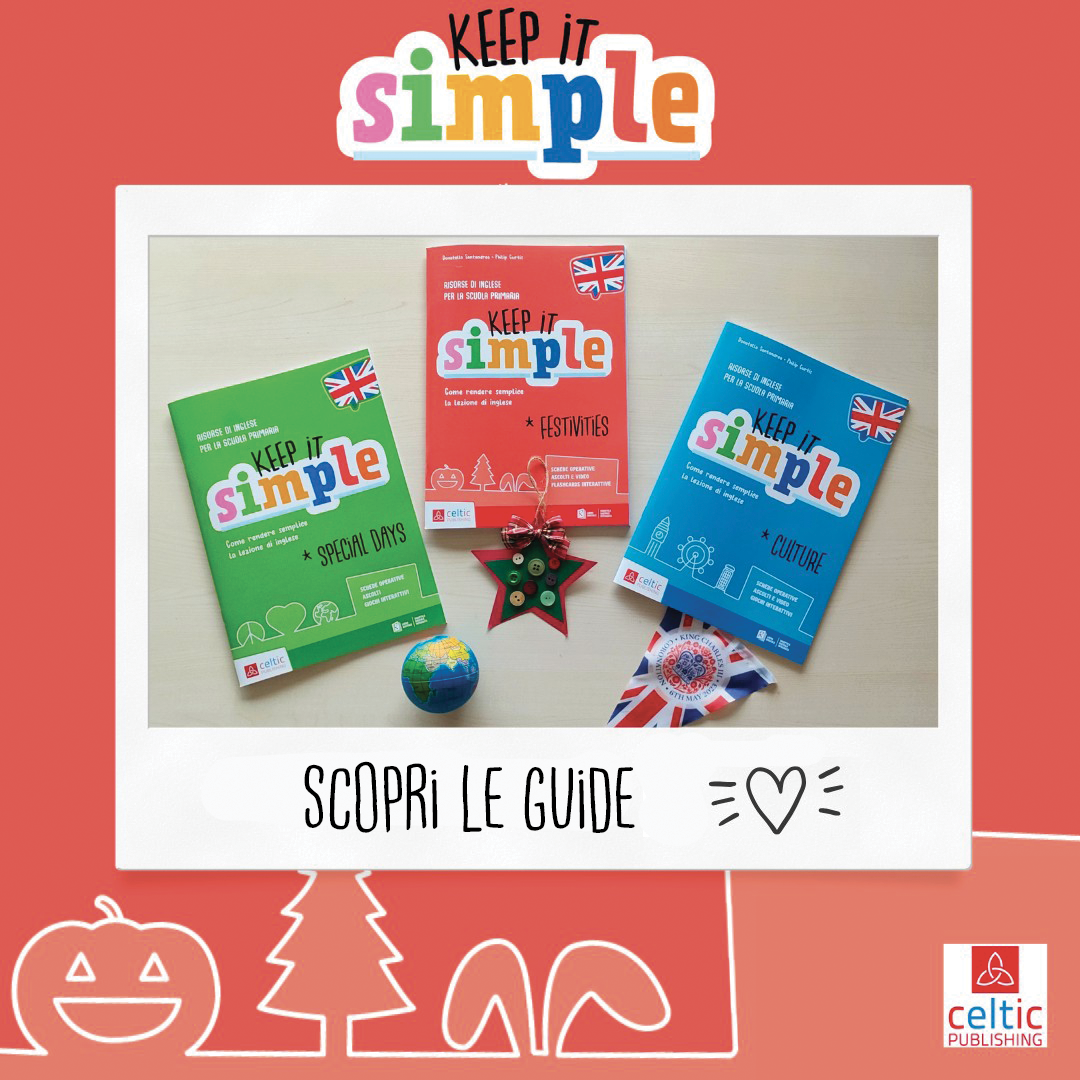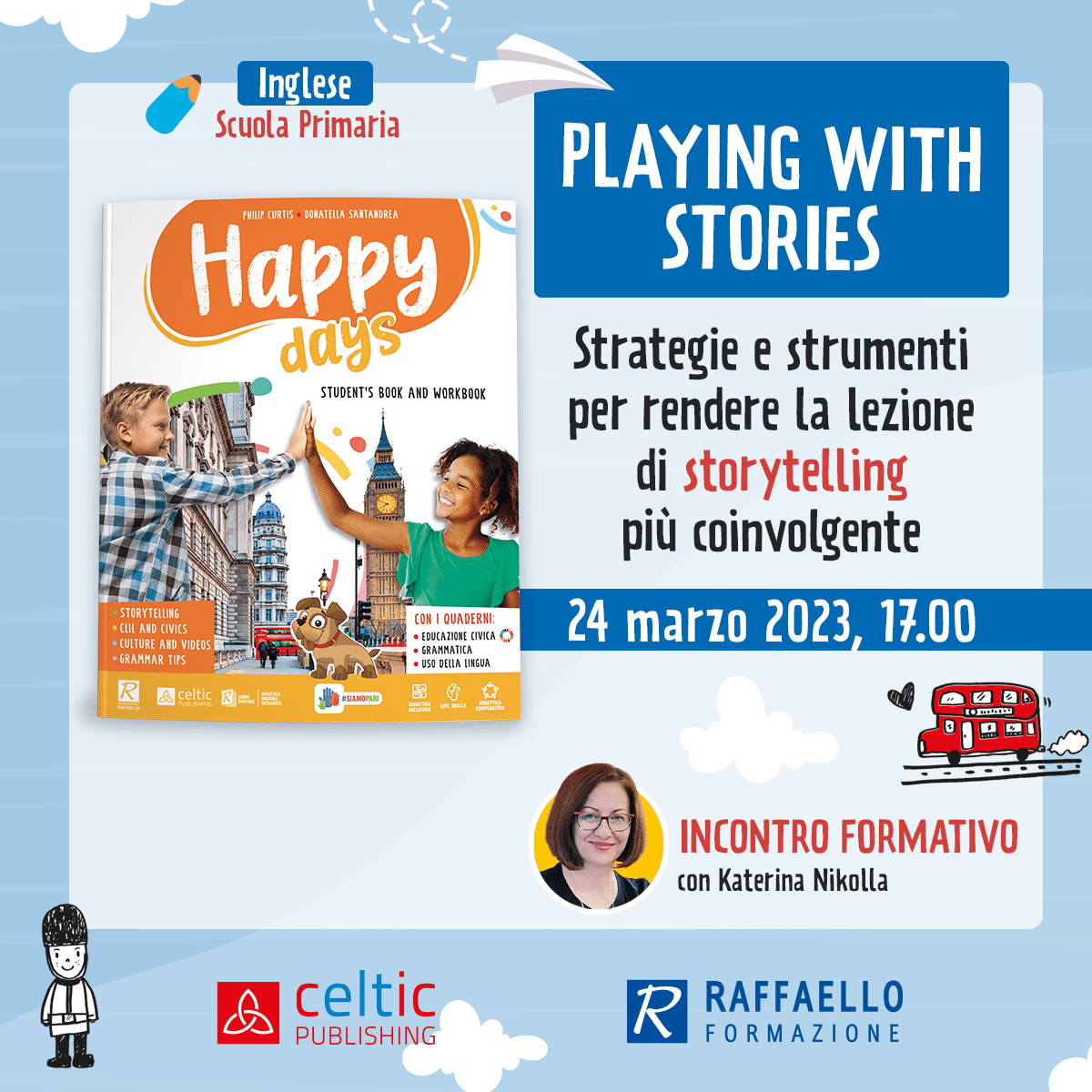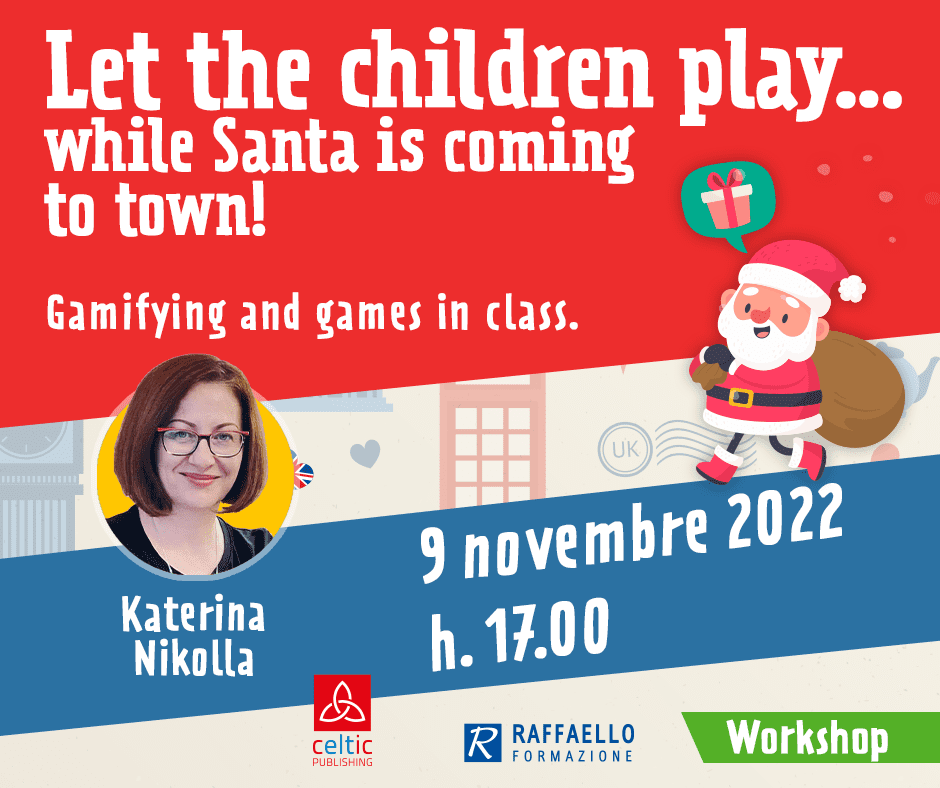It’s time to move and learn!
Il corpo e il movimento come strumenti di apprendimento (e di divertimento) della lingua inglese.
“Everything in the universe has a rhythm, everything dances.”
Questa meravigliosa affermazione di Maya Angelou si applica perfettamente a qualsiasi lezione di inglese.
Quindi, perché non esplorare “la danza” della conoscenza in classe e “muoversi al ritmo” dell’apprendimento?
Gli studenti della scuola primaria imparano meglio attraverso il gioco e il movimento perché permette loro di comprendere la lingua in modo naturale e interattivo. Il metodo di insegnamento TPR prevede l’uso del movimento fisico e della gestualità per aiutare i bambini e le bambine ad associare parole e frasi alle azioni, in modo che l’apprendimento della lingua diventi significativo. Fare collegamenti tra i movimenti del corpo e gli elementi lessicali aiuta i bambini e le bambine a trattenere le nuove informazioni perché dà significato e contesto.
Nel nuovo webinar “It’s time to move and learn”, daremo uno sguardo al metodo TPR, perché e come applicarlo nell’apprendimento delle lingue, nonché alle attività pratiche e pronte per l’uso tratte dal nuovo corso di inglese Hello World. Vedremo come possiamo far muovere e imparare i nostri bambini e bambine, ballare e ricordare, recitare e cantare, rendendo il loro percorso di apprendimento più coinvolgente!
Il percorso dell’apprendimento continuo non passa solo attraverso gli ambiti linguistici, ma attraversa anche ambiti sociali ed emotivi essenziali per la crescita di un bambino. Del resto, come affermava Aristotele circa 2400 anni fa, “Educare la mente senza educare il cuore non è affatto educazione”.
Con questo in mente, in questo webinar discuteremo dell’importanza di concentrarsi non solo sullo sviluppo degli aspetti cognitivi dei bambini (la mente), ma anche di altre qualità che ci rendono umani (il nostro cuore), in altre parole parleremo di SEL (Apprendimento sociale ed emotivo.)
Condividerò suggerimenti e idee su come le nostre lezioni di lingua possano essere inclusive potenziando l’intelligenza sociale ed emotiva dei nostri piccoli studenti e studentesse. Attraverso le attività suggerite, i bambini e le bambine potranno iniziare a identificare le proprie emozioni, imparare a gestire lo stress ed essere consapevoli che l’amore è universale tra tutti gli esseri viventi.
Siete tutti e tutte più che benvenuti a unirvi a me online mercoledì 20 marzo alle ore 17.00, per condividere opinioni e imparare gli uni dagli altri. Ci vediamo tutti e tutte lì!
Katerina Nikolla
ENGLISH VERSION
“Everything in the universe has a rhythm, everything dances.”
This pearl of wisdom from Maya Angelou perfectly applies to any language classroom.
So, why not explore the “dance” of knowledge in the class and move to the “rhythm” of learning?
Primary school students learn best through play and movement because it allows them to understand language in a natural and interactive way. The TPR teaching method involves using physical movement and gestures to help children associate words and phrases with actions, so the language learning becomes more memorable. Making connections between body movements and lexical items helps children retain the new information because it gives meaning and context
In my new webinar, we are going to take a look at the TPR method, why and how to apply it in the language learning as well as practical, ready to use activities from the newly released Hello World coursebooks for students of primary school. Let’s see how we can make our kids move and learn, dance and remember, act and chant, making their learning journey more engaging!
The vibrant classroom is only a glimpse into the vast world which our little learners explore and discover every day and every moment. The path of continuous learning passes through not only linguistic fields but it also crosses essential social and emotional areas of a child’s growth After all, as Aristotle said some 2400 years ago, “Educating the mind without educating the heart is no education at all”.
With this in mind, in this webinar we will discuss the importance of not only focusing on developing the cognitive aspects of the children (minds) but also other qualities that make us human (our hearts), in other words, we will talk about SEL(Social and Emotional Learning.)
I am going to share tips and ideas on how our language lessons can be inclusive by empowering the social and emotional intelligence of our little learners. Through the activities suggested, children may start identifying their emotions, learn how to handle stress and be aware that love is universal between all living.
You and your teacher fellows are more than welcome to join me online on Wednesday 20th of March, to share views and learn from each other. See you all there!
Katerina Nikolla







